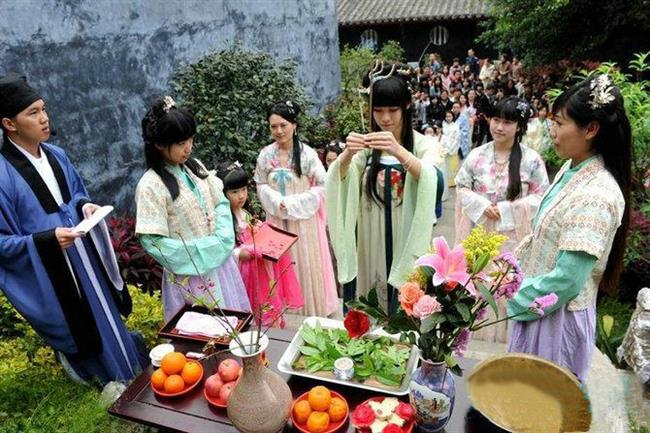Rains, humidity mark the coming of mangzhong

The arrival of mangzhong, or Grain in Ear, signifies the maturing of wheat crops in summer.
It usually occurs on June 5-7 when the sun’s elliptical longitude reaches 75 degrees, marking continuous rains in the middle and lower reaches of the Yangtze River.
The Chinese proverb depicts the days after Grain in Ear as the “three periods of waitings” — waiting for mantis to break through their shells, waiting for the shrikes to sing on the tree, and waiting for mocking bird to stop singing.
This year, mangzhong falls on June 5. It will be followed by high temperature, humidity and frequent rains, which will last until mid-July.
As the period usually coincides with the time when the plum matures, it is also referred to as the plum rain season in China. The season helps with the growth of rice, vegetables and melon fruits.
It is usually the busiest period for farmers in the country as they make the best use of their time in harvesting the mature crops, taking care of plants and sowing seeds for new crops that mature in autumn.
Those in the reaches of Yangtze River are traditionally busy with harvesting wheat and transplanting rice shoots, while farmers in northern China usually plant beans apart from collecting wheat.
But the continuous rain and high humidity can be troublesome rather than a convenience to people’s daily life. Infectious diseases spread easily because of mosquitoes.
Mold also prospers during this season, bringing with it unwanted issues like food safety and common storage.

People dressed in traditional clothing worship the flower god.
See off the flower god
Many flowers that blossom in spring begin to wither as mangzhong approaches. In some regions, people hold ceremonies to “see off the flower god back to heaven.” It is a way of expressing their gratefulness to the god and looking forward to her arrival next year.
As noted in the novel “A Dream of Red Mansions,” written by Cao Xueqin in the Qing Dynasty (1644-1911), the girls made sedan and carriage with flowers and willow branches, as well as colorful flags with silk and ribbons.
Every branch with flowers in the garden was decorated with these beautiful crafts.
Sacrifice for good harvest
There is the traditional ceremony, an miao, during Grains in Ears in south Anhui Province since the early Ming Dynasty (1368-1644). An miao literally means “safe shoots.” The ceremony is a farmer’s prayer for a good harvest in autumn.
People offer crops, vegetables and fruits with newly harvested wheat flour as offerings to the god.
Mud Battle Festival
The Mud Battle Festival, which is usually held around this time, is a popular activity among young people of the Dong ethnic minority in southeast Guizhou Province.
During the festival, young men transplant rice shoots in the field and throw mud on each other for fun. The one who is splashed the most mud is seen as the most popular one in the village.
Plum cooking
Plums usually mature in May and June which coincides with the arrival of Grain in Ear.
Though plums are known to have a lot of health benefits like reducing blood fat, relieving fatigue and improving immunity among others, it does not taste good when eaten raw. Boiling them with water and rock sugar or pickled by salt are common ways to process the fruit.
















